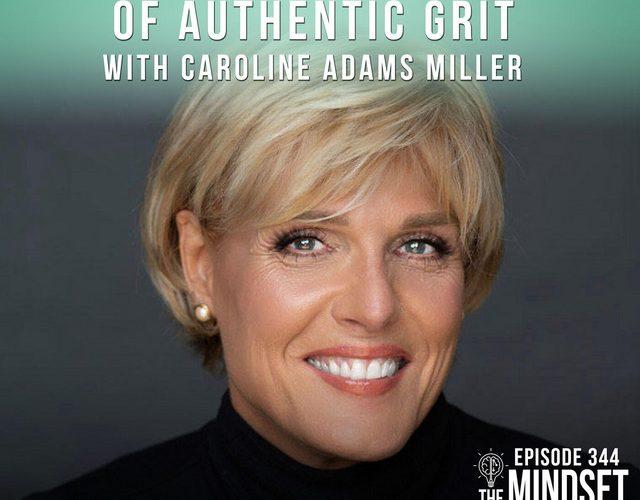By Homaira Kabir – December 5, 2017
My client sits across from me. She’s a successful woman who heads one of the major pharmaceutical companies in the state. Her finely crafted confidence wilts as we get talking about the purpose of our session. She tells me she feels empty inside. Despite her successes, she feels she’s missed out on her children’s lives and watched her own pass her by. And she wonders whether it was all worth it.
Over the course of the session, it becomes clear to me that the doggedness with which she has pursued her career path is a distinct form of grit that coach and author Caroline Adams Miller calls “stubborn (or “stupid”) grit” in her new book Getting Grit. Stubborn grit is the inflexible pursuit of goals even when it’s far wiser to change course, for financial, physical or emotional reasons. My client ignored her bodily signals of burnout and numbed her maternal instincts as she persisted single-mindedly towards adding more credentials to her resume—until she felt she was living someone else’s life.

The Wrong Types Of Grit
While grit may have a genetic component, stubborn grit may have childhood roots. Children who grow up in homes where failure is criticized and success is amply appreciated, often develop a fragile sense of self-worth where their value as an individual is tethered to their performance. And those who grow up with excess praise and incessant adulation to their feats can develop a distorted belief in their abilities and become convinced that they have figured out a way to defy all odds. Such beliefs are further perpetuated in a world that values what New York Times columnist David Brooks calls resume virtues: the skills that make us marketable.
When gratitude, humility and patience become increasingly unwanted qualities, it is easy to get drawn into the promises of power and prestige. This is reflected not only in stubborn grit, but also in other forms of the wrong type of grit. Miller identifies two more, each with their own particular obsession with appearances and accolades.
“Faux grit” is where individuals are so drawn to the admiration that comes from achieving great things that they take shortcuts or fake their accomplishments to claim it.
“Selfie grit” is marked by an equal infatuation with laurels and praise, but unlike faux grit that shuns hard work, selfie grit is about self-glorification and announcing real and imagined feats to the world.
All these types of grit are dysfunctional versions of a fundamental human need—to be loved and appreciated for who we are. When we spend our lives running away from ourselves, we lose sight of who we are and become disconnected from our vision for ourselves. Instead, we desperately try to be the person others would reward us for being, and the Pavlovian system of social media with its relentless feedback loops fuels this disoriented journey. We become everybody but ourselves and end up feeling empty inside.
Building Authentic Grit
The solution lies in coming back home to ourselves. When we understand who we are and what we want in life, our lives become meaningful. And meaning, unlike power or accolades, is not something that society can hand us on a silver platter. Meaning emerges from self-discovery, from building coherence between our past, present and future, and from aligning our actions with the legacy we want to leave behind.

Harvard professor Robert Kegan has found that individuals who take the inward journey advance their “order of consciousness.” They move from the third stage of the “socialized mind” where others direct their thoughts and behaviors, to the “self-authoring mind”—the fourth order of consciousness where they become the authors of their own lives.
Building this internal connection is what leads to the right type of grit, or what Miller describes as “authentic grit” where the passion and perseverance with which an individual pursues their life vision inspires others to do the same. Her book offers many examples of individuals with authentic grit, some of whom are well-known, while others are regular people showing up with the best of themselves every single day, doing extraordinary things in ordinary lives.
The Inward Journey
Each one of us can build authentic grit by connecting to what inspires us. It’s not always easy to do so in an unhealthy, unhealed culture, but we can change this culture by changing ourselves. And here are some of the questions that can help us do so:
What do I want of my life?
What is the purpose I want to pursue, the experiences I want to have, the difference I want to make to others? What is it that I will regret not doing and why? How do I want to be remembered by those who knew me, and perhaps even those who didn’t?
How will I live every day?
What are the inner resources that can help me show up fully every day? What were the moments in my life when I felt the most alive, and what strengths was I using? How can I use them again to live in alignment with my vision?
Who will I turn to for support?
Who are my external resources, the people who can support me, guide me, inspire me and help me in my journey? How will I express my gratitude for their presence in my life, and how will I support them to live their best lives?
We live in an age of perpetual change. And while traditionally defined roles and careers (mostly chosen for us by others) had the power to create our identity in previous times, this framework no longer applies. Not only are our roles and careers in a state of constant flux, we’re also looking for more.
We’re searching for meaning. And in the end, each one of us has to find our own answer.
Homaira Kabir is a recognized positive psychology coach and a researcher on women’s self-esteem. Check out her Confidence Academy for free resources on building authentic self-worth.
To see the article online, click here.




